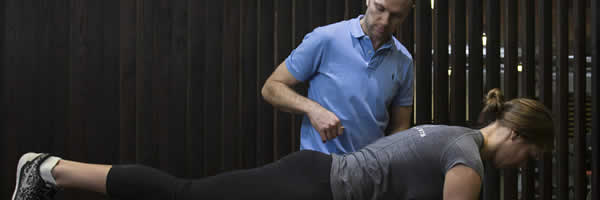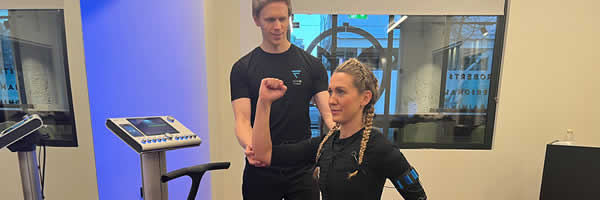Personal Training
The Matt Roberts Personal Training team have long been recognised as industry leaders. With more than a million hours delivered across the UK. Now, our expert training team can coach you wherever you are in the world!
We have all been lab rats for the past 4 months and the data collected from a variety of sources is fascinating. I have to admit that this period has brought out the body data nerd in me! I also blame my clients for fueling my hunger for data driven results with their with daily updates, stats and reports for me to analyse against their individual patterns and habits. Thanks guys and apologies to your partners who suffered our endless virtual conversations with no escape!
OK, so we have become fatter overall, no great surprise there I guess. However, more interestingly, we have seen significant upward changes in weight and body fat in those who kept exercising. We have data showing raised resting heart rates during this period, along with some pretty significant falls in HRV (Heart Rate Variability, more on that later), which are all pointing to some key changes in fitness levels.
The Government imposed lockdown rule of only one hour allowed outside to walk, run or cycle, combined with the freakishly good April weather, saw London’s parks busier than a bustling Saturday morning in June. The chance to escape confinement, move, breathe and take in the sun was clearly being enjoyed all, while the restrictions on sitting on park benches meant that everyone stayed on the move. For regular exercisers, this was simply a continuation of their normal pattern and many actually upped the ante by adding the hour each day to their normal routine. For those that were not already in an active routine, introducing this hour into their day was a great and positive change in cardiovascular training.
So far, so good.
We have been using Whoop devices for around 12 months now and have been working closely with the US based company on a number of projects. The global data this wearable device has accumulated from its entire user database is fascinating.
As we might expect, there was approximately a 10% increase in activity levels over the period of March into April this year, as the extra time, enthusiasm and novelty was still in its heyday. However by May the levels had dropped by 8% as motivation waned.
Overall, whilst intensity levels fell during May and June, the global frequency of exercise increased over the whole period, so why is it that we have become collectively fatter?
As many of our clients know, we use the Styku scanning system to scan and assess your body. The laser scanning system is perhaps the most accurate body shape and composition analysis system we have come across. It provides clear, accurate data and imagery to show exactly how our bodies change.
We have client data going back 3 years and the net effect of the last 4 months is becoming apparent on those that we have been testing over the last month, particularly when set against the trend line for the immediate 6 months prior to lockdown.
What has happened to your fat?
So far, we know overall weight is showing a marginal increase of 2-3%, however body fat has risen by 15-20% over the period, with lean muscle mass falling by 5-6%. Circumference around the waist has increased on average by 5%, the thighs have decreased by 8% and the arms and chest have decreased only slightly.
The loss around the thighs is particularly interesting, as part of our major muscles along with the chest, back and glutes they play a fundamental role in our ability to metabolise fat. We need these big muscles to remain active and strong, we must continually test the muscular structure and force them by challenging our bodies. Prior to lockdown, if your normal routine was to go to the gym, lift weights, HITT sessions or powering through intervals on a watt bike your body was being asked to go beyond its normal limits and regenerate new fibres and cells to cope. This constant pressure burns energy and in doing so raises our metabolic base so that we reach the Mecca of burning more calories when doing nothing, even when we sleep!
Whilst cardiovascular training is vital for our wellbeing and overall calorie expenditure, the small daily allowance, in which people predominantly performed low to moderate cardiovascular exercise; long walks, slow runs, distance cycling, has resulted in Styku scans showing markedly increased body fat and decreased muscle.
But what if you DID keep exercising in a similar way when you had the chance?
People who exercised once each day, 4-5 days each week, somewhat intensively doing a variety of exercises mainly including running and home circuits are showing decreased body weight by 4-5% but increases in body fat by about 10%. All this despite having maintained some discipline in exercise.
However our clients who exercised hard in their homes and home gyms (was there ever a more prized possession?) for an hour, 4-5 days per week and then used time outside to do moderate cardio exercise such as walking, home maintenance and gardening , we have seen body fat losses of 10-12% and in some cases as much as an amazing 60% drop.
Did we get fitter?
According to the data collated by Whoop we increased activity in March and April, then it fell away again during May into June, before more recently rising again.
The key pieces of data that we look at are:
Heart Rate: Resting heart rates fell on average in March and April, the net result of increased amount of activity and possibly a little more rest and recovery time than normal in the first period of lockdown. Then, when the levels of activity reduced by 10-12% the resting heart rate levels increased by 5-6% too. This could come down to a few possible causes, including reduced activity, poorer quality of sleep and the negative effects of alcohol on sleep, recovery and heart loading. On average, we raised our average heart rate and became more cardiovascular “stressed.”
Heart Rate Variability: Our “HRV” is something we are not as aware of as we need to be. Quite simply it is the gap between the beats of our heart. The degree of variance or flex signifies the stresses imposed on the body and heart itself and thus a key piece of data. Whilst it’s possible to be quite fit and not have very high HRV levels, it’s not possible to have a high HRV when you aren’t fit, as such this is one of the key indicators of potential cardiopulmonary problems, we should treat it as an early warning system. In fact, significantly reduced HRV levels for a sudden and prolonged period are a potential indicator of an impending heart attack. Our HRV levels dropped on average during lockdown and this needs to be addressed. Exercise is not the only answer for this; alcohol, stress, poor sleep, breathing techniques and poor diet all play a role in changing HRV for better or worse, hence why during lockdown figures became substandard. It is possible to accurately look at your alcohol tolerance levels by tracking drops in HRV of up to 50%, combined with a rise in heart rate and respiration rate, whether this happens after one, two or three drinks (after three or more EVERYONE is negatively affected!).
Respiratory Rate: We also look at breathing rate using the Whoop device. Surprisingly it has proven very effective at predicting when someone is about to get sick after contracting-19 when used in conjunction with the HRV data, showing drops in HRV and significant rises in respiration rate. Tracking overnight respiration rate in general is a good indicator of how much your body is reaching a restorative state overnight. What is very clear is that alcohol impacts on our restorative sleep quantity enormously, it has a huge knock-on impact on our ability to produce hormones such as testosterone and cortisol in particular. Feel tired in the morning? Need to reach for coffee to function? Need some form of carbs to feel human? You get the picture.
What do we need to do now?
What this all points towards is the critical importance of a few things.
We need to be pushing our bodies hard in a couple of ways.
Firstly, we need to lift some heavy stuff, often! Two or three days each week we need to significantly overload our muscles in the way that our ancestors used to. In that, I’m not suggesting we kill and carry our food home, but the theory is we need a big “push” exercise and “pull” exercise for the upper and lower body.
For those who are concerned about building mass, don’t worry, you are just not going to. Creating muscle mass and size is a whole different way of training and eating, you are not going to do that unless you have freakish levels of human growth hormone and testosterone in your body, in most cases that is something that we pray for rather than assume to be in abundance! We CAN make you gain mass but you are going to have to specifically ask for that and we are going to be training and feeding you in very different ways.
Secondly, we need to ensure that there are “sprints” in our training. These don’t need to literally be running sprints, but there is a massive need to use short, high intensity cardio blasts 3 times per week. These are 30-60 seconds in length, with longer recovery that can be 2-5 times the duration of the work and we need to do this 6-8 times.
Thirdly, it is imperative that we move moderately, regularly. What is clear from all of the information we have seen is that the value of the incidental exercise; the activities we do in getting around and walking from place to place have enormous value in our weight management. Ideally, we should always do a 20-30 minute pre-breakfast fasted cardio period (congrats to dog owners!) in order to help fat metabolism, glucose control and insulin regulation. This is ideally EVERY day, but 4-5 days per week is still pretty good.
I could give you fourth, fifth, sixth and more now, but I will save that for updates over the coming weeks.
For now I say the main take away is to get back on track with having a visual ideal of what it is you are trying to achieve. We need to see it, know it, understand it and then roadmap that with you. We have seen some truly remarkable results from clients over lockdown due to the luxury of having had time in schedules to spend on exercising well, eating well and resting more than before. This has not been the case for everyone, I know that, but now is your time to sit down with us, plan a routine for your exercise, diet, mobility, sleep, stress management, bio-hacking potential and more in order to reach a level never reached before and one that has you at the peak of health, wellness,vitality and immunity.
What can we do to help you?
Styku Scan – This is something that you should do with us at least once every month. We can track and show you data and imagery to look at what is actually going on.
Blood Test – We would like to see your blood data every 4-6 weeks to look at changes in key markers that allow us to tweak your diet and exercise programme accordingly.
Whoop Device – This is a must-have device in order for us to collect your data and advise on changes based on 24/7 views of how you move and sleep.

The Matt Roberts Personal Training team have long been recognised as industry leaders. With more than a million hours delivered across the UK. Now, our expert training team can coach you wherever you are in the world!

Mayfair Physiotherapy offers unrivalled expertise and high quality care. We have an expert team of Specialist Physiotherapists with years of experience led by Simon Gilchrist.

Located in the heart of Knightsbridge, the Bone Health Clinic at Evolution offers a cutting-edge service designed to combat osteoporosis and osteopenia.

Vive Fitness combines EMS (electro-muscle-stimulation) technology with tailored training programmes to transform your health and fitness experience.

Every gut is unique and as such it is essential you have the deepest possible understanding of your own in order to optimise your diet and lifestyle.

Your hormones are at the heart of your health and performance, ultimately determining how well you feel and function throughout your life.

While striving for physical health and longevity is essential to live your best life, it is vital that we learn how to better care for and tend to our mental and emotional wellbeing.